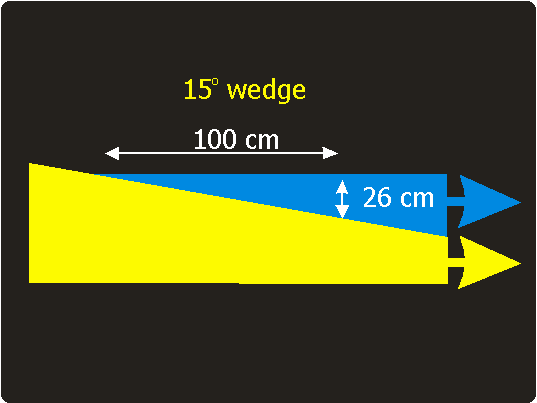This is the model region of sea. There is a flat 15 degree seabed, and a horizontal air/water interface. The bubble is going to be placed 1 metre from the water's edge, where the water is 26 cm deep. We shall use the theory in:
Leighton T G, White P R, Morfey CL, Clarke J W L, Heald G J, Dumbrell H A and Holland K R,
The effect of reverberation on the damping of bubbles. Journal of the Acoustical Society of America, 112(4), 2002, 1366-1376
to calculate the effect that reverberation in this wedge shape of ocean will have on the dimensionless radiation damping coefficient of Devin, and the natural frequency predicted by Minnart (click here if you wish to be reminded of the roles of these parameters in the inversion).

This is clearly a static model of what can be a very dynamic situation, so we will calculate the result for the bubble placed at three different depths (1, 10 and 25 cm below the atmosphere/ocean interface). The variation in the result will give an indication of by how much the natural frequency and radiation damping of a bubble might change as, for example, it rises under buoyancy.
Click here for the homepage of the Centre for Ultrasonics and Underwater Acoustics